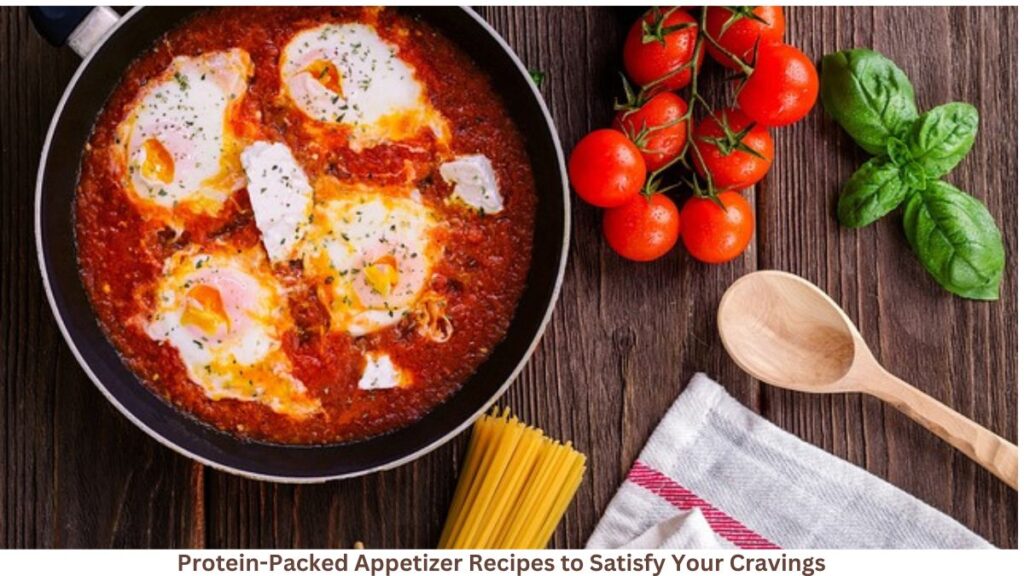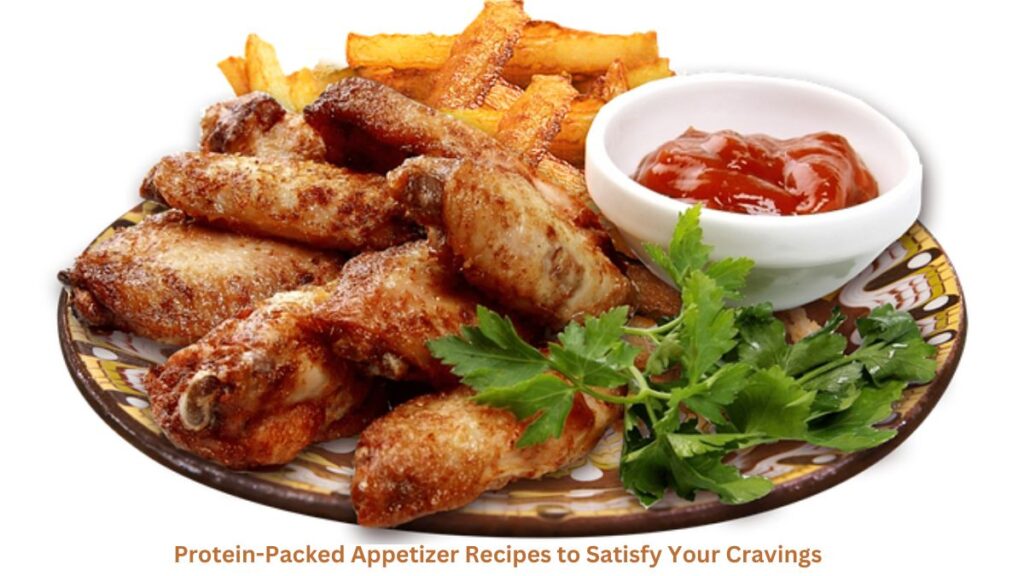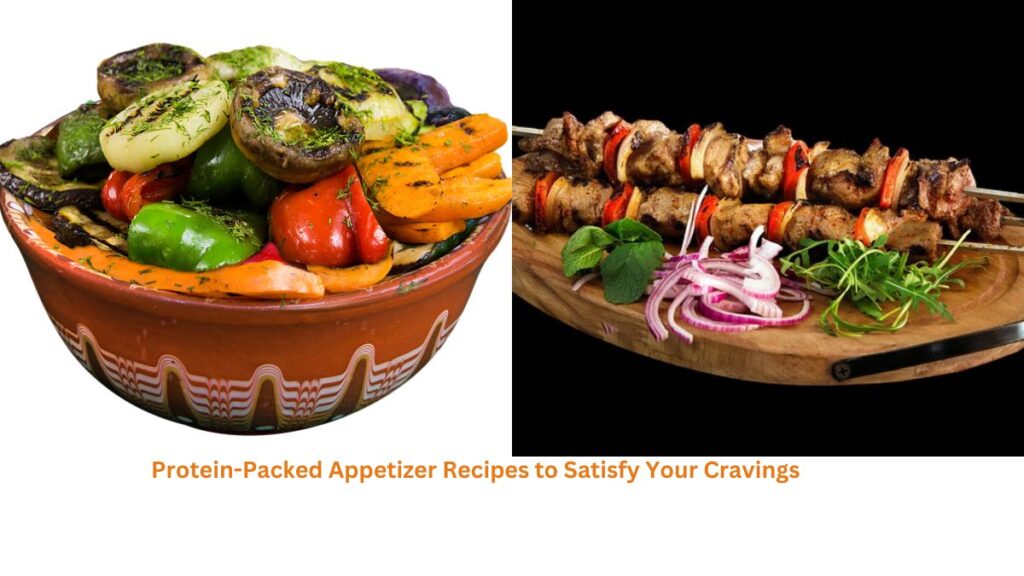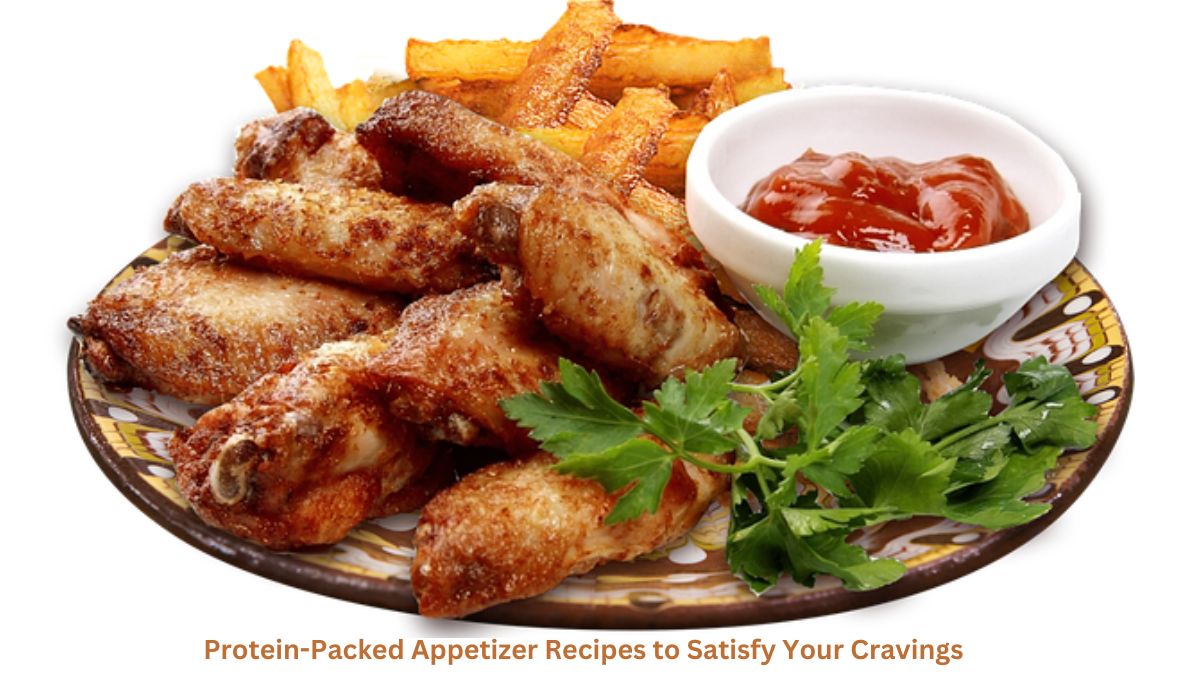Introduction:
Unlocking the Culinary Delight Protein-Packed Appetizer Recipes to Satisfy Your Cravings

In the realm of gastronomy, appetizers are the precursors to a delightful dining experience, setting the stage for what’s to come. But what if these appetizers not only tantalize your taste buds but also provide a healthy punch of protein? Enter the world of protein-packed appetizers, where flavor meets nutrition in perfect harmony.
How do you balance flavor and nutrition when developing protein-packed appetizer recipes, ensuring they’re both satisfying and healthful?
Balancing flavor and nutrition when developing protein-packed appetizer recipes is essential to create dishes that are both satisfying and healthful. Here’s how to achieve that balance:

- Choose Flavorful Ingredients: Start with high-quality, flavorful ingredients. Fresh herbs, spices, citrus zest, and aromatic vegetables like garlic and onions can add depth and complexity to your appetizers without relying on unhealthy fats or excessive salt.
- Experiment with Seasonings: Don’t be afraid to experiment with different seasonings and flavor combinations. Try using a variety of herbs, spices, marinades, and sauces to enhance the taste of your dishes while keeping them nutritious.
- Incorporate Healthy Fats: While it’s important to keep unhealthy fats in check, incorporating small amounts of healthy fats can add richness and flavor to your appetizers. Consider using sources such as avocado, nuts, seeds, olive oil, and fatty fish like salmon or tuna.
- Use Lean Protein Sources: Opt for lean protein sources such as skinless poultry, lean cuts of meat, fish, seafood, tofu, tempeh, beans, lentils, and Greek yogurt. These options provide ample protein without excessive saturated fat, promoting heart health and overall well-being.
- Balance Macronutrients: Aim to include a balance of macronutrients in your appetizer recipes, including protein, carbohydrates, and healthy fats. This balance helps provide sustained energy, promote satiety, and support overall nutritional needs.
- Focus on Whole Foods: Whenever possible, use whole, minimally processed ingredients in your recipes. Whole foods are typically higher in nutrients and lower in additives, preservatives, and added sugars, making them a healthier choice overall.
- Incorporate Plenty of Vegetables: Load up your appetizers with plenty of colorful vegetables to add texture, flavor, and nutrients to your dishes. Vegetables not only enhance the visual appeal of your appetizers but also provide essential vitamins, minerals, and antioxidants.
- Pay Attention to Portion Sizes: While it’s tempting to indulge in delicious appetizers, be mindful of portion sizes to avoid overeating. Focus on serving smaller portions that are satisfying yet healthful, allowing guests to enjoy a variety of flavors without feeling overly full.
- Offer a Variety of Options: Provide a variety of protein-packed appetizer options to cater to different tastes and dietary preferences. Include options for vegetarians, vegans, and those with food allergies or intolerances to ensure that everyone can enjoy your offerings.
- Seek Feedback and Adjust Accordingly: Finally, don’t be afraid to seek feedback from friends, family, or taste testers and adjust your recipes accordingly. Pay attention to what flavors and textures resonate most with your audience and use that feedback to refine and improve your recipes over time.
What role do protein-packed appetizers play in a balanced diet, and how can incorporating them into meal planning benefit overall health and wellness?
Protein-packed appetizers play a crucial role in a balanced diet by providing essential nutrients, promoting satiety, supporting muscle growth and repair, and contributing to overall health and wellness. Here’s how incorporating them into meal planning can benefit your health:

- Satiety and Weight Management: Protein is known to be more satiating than carbohydrates or fats, meaning it helps you feel full and satisfied for longer periods. By including protein-packed appetizers in your meals, you’re less likely to overeat during the main course or snack on unhealthy options later, thus supporting weight management efforts.
- Muscle Growth and Repair: Protein is essential for building and repairing tissues, including muscle tissue. Incorporating protein-rich appetizers into your diet ensures that your body has an adequate supply of amino acids, the building blocks of protein, to support muscle growth, repair, and maintenance.
- Improved Metabolic Health: Protein plays a key role in regulating metabolism, blood sugar levels, and insulin sensitivity. By consuming protein-packed appetizers, you can help stabilize blood sugar levels and improve metabolic health, reducing the risk of insulin resistance, type 2 diabetes, and other metabolic disorders.
- Nutrient Density: Many protein-rich foods are also rich in other essential nutrients, such as vitamins, minerals, and antioxidants. By including a variety of protein-packed appetizers in your diet, you can increase your intake of these important nutrients, supporting overall health and wellness.
- Bone Health: Certain protein sources, such as dairy products and leafy greens, also contain calcium and other bone-building nutrients. Incorporating these foods into protein-packed appetizers can help support bone health and reduce the risk of osteoporosis and bone fractures.
- Heart Health: Protein-packed appetizers can be part of a heart-healthy diet, especially when they incorporate lean protein sources such as fish, poultry, beans, and legumes. These foods are low in saturated fat and cholesterol and can help lower blood pressure, reduce LDL (bad) cholesterol levels, and decrease the risk of heart disease.
- Stress Reduction: Protein is necessary for the production of neurotransmitters such as dopamine and serotonin, which play a role in regulating mood and reducing stress. Consuming protein-packed appetizers may help stabilize mood and promote feelings of relaxation and well-being.
Incorporating protein-packed appetizers into your meal planning can help you achieve a balanced diet, support overall health and wellness, and contribute to long-term vitality and longevity. By prioritizing protein-rich foods and enjoying a variety of delicious appetizers, you can nourish your body, satisfy your taste buds, and thrive in every aspect of life.
Are there any specific dietary preferences or restrictions you consider when developing protein-packed appetizer recipes, such as vegan, gluten-free, or low-carb options?
When developing protein-packed appetizer recipes, it’s essential to consider various dietary preferences and restrictions to ensure inclusivity and accommodate diverse nutritional needs. Here’s how specific dietary preferences and restrictions are addressed:

- Vegan and Vegetarian Options: Incorporating plant-based protein sources such as beans, lentils, chickpeas, tofu, tempeh, nuts, and seeds allows for the creation of protein-packed appetizers suitable for vegans and vegetarians. Recipes like chickpea sliders, lentil meatballs, tofu skewers, or nut-based dips can provide ample protein while still being delicious and satisfying.
- Gluten-Free Variations: Many whole foods naturally free of gluten, such as vegetables, fruits, meats, poultry, fish, dairy, legumes, and nuts, can be used to create gluten-free protein-packed appetizers. Additionally, gluten-free grains like quinoa, buckwheat, rice, and corn can be utilized to make gluten-free versions of recipes such as quinoa-stuffed mushrooms or rice paper spring rolls.
- Low-Carb Options: For those following a low-carb diet, incorporating protein-rich ingredients and minimizing carbohydrate-rich ones is key. Appetizer recipes can include protein-packed options like meat or seafood skewers, cheese-stuffed bell peppers, deviled eggs, or cucumber rolls filled with tuna or chicken salad. These options provide satiating protein without the excess carbs.
- Allergen Considerations: Considering common allergens like nuts, dairy, eggs, and shellfish is crucial when developing protein-packed appetizer recipes. Offering allergen-free alternatives or providing substitutions ensures that individuals with food allergies or sensitivities can still enjoy delicious and nutritious appetizers without compromising their health.
- Balancing Flavor and Nutrition: While prioritizing protein content, it’s equally important to focus on flavor, texture, and overall enjoyment of the appetizers. Incorporating herbs, spices, citrus, and aromatic vegetables enhances the taste profile without relying on excessive salt, sugar, or unhealthy fats. Additionally, using cooking techniques like grilling, roasting, or marinating adds depth and richness to the flavors while preserving the nutritional integrity of the ingredients.
Conclusion:
By considering these dietary preferences and restrictions, along with balancing flavor and nutrition, developers can create protein-packed appetizer recipes that cater to a wide range of dietary needs while ensuring they’re both satisfying and healthful.






